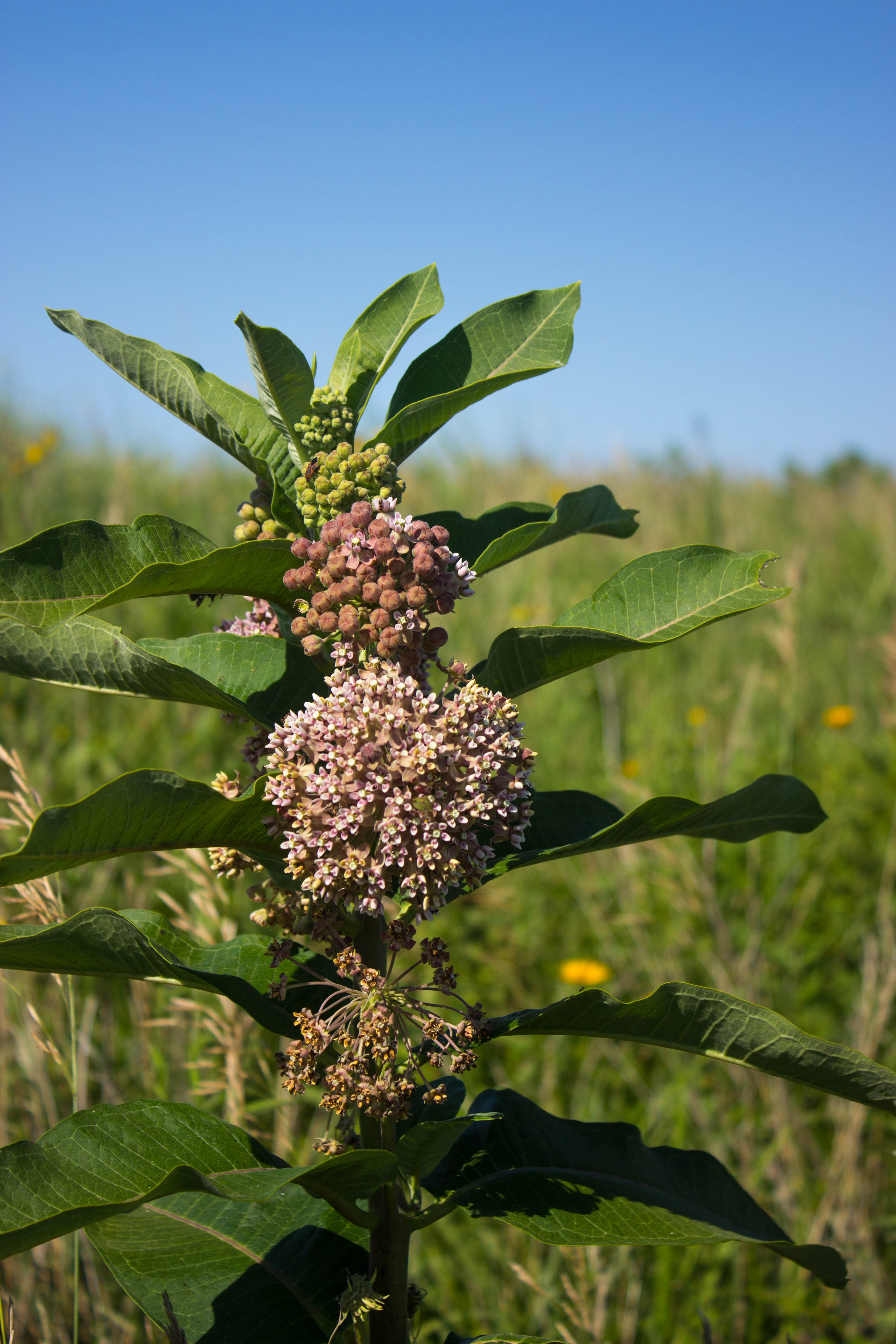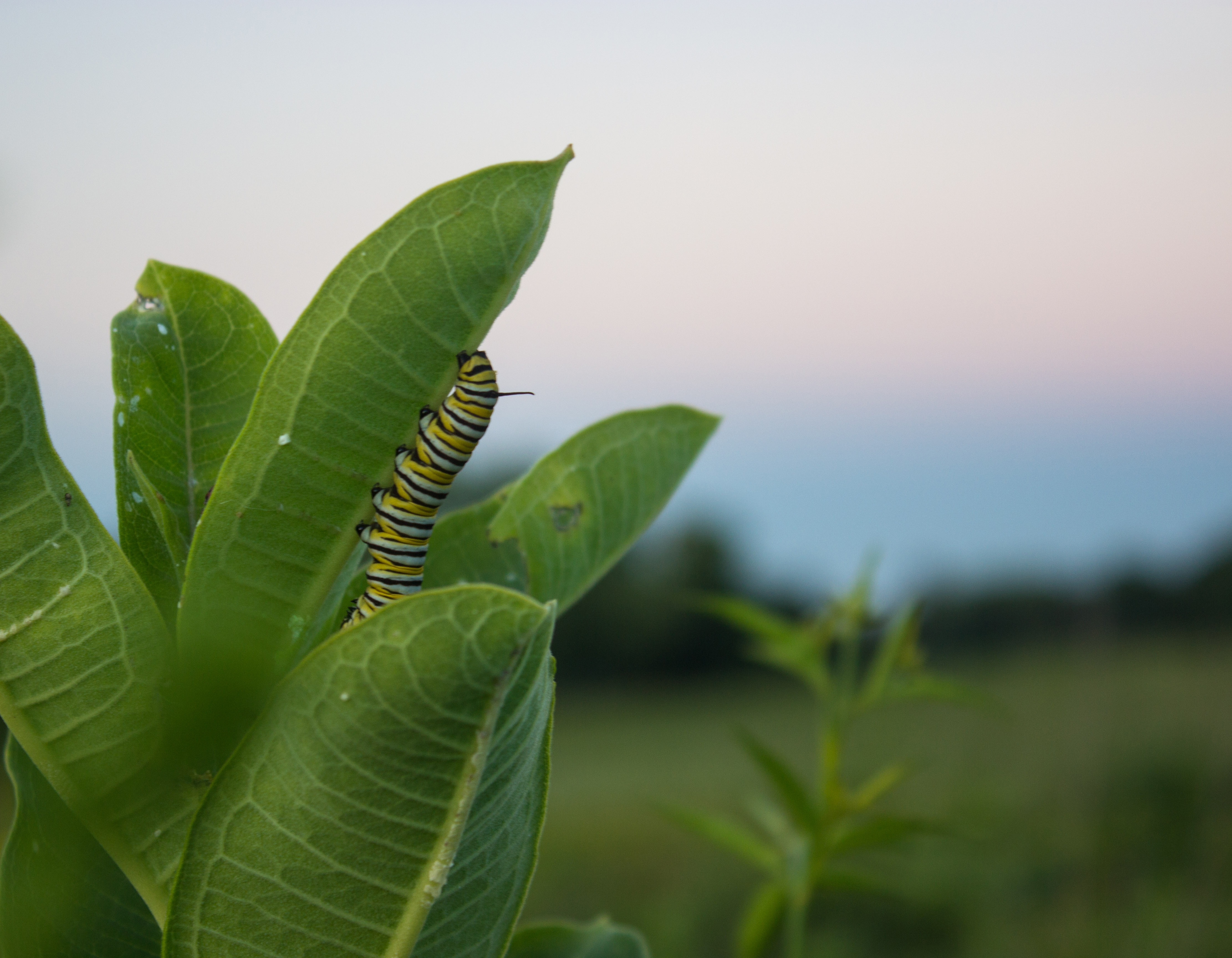At every single moment of every single day, the grasslands are moving through their cycle of life, death, and resurrection, changing from moment to moment. As the Earth warms and cools, as the atmosphere provides or withholds its water, the flora grows, then withers, then reseeds. Throughout the dormant winter, the soil nurtures roots as microbes provide life energy to that soil, preparing the prairie for the new grass shoots and wildflower blossoms that will spring forth from the old. Prairie is always transforming.


Amidst this constant change, there’s a star transformer in the prairie firmament: milkweed. As I write, milkweed is having a special moment in our awareness thanks, sadly, to the harrowing decline in the monarch butterfly population. Milkweed’s leaves provide the monarch caterpillar with its major food source for it to transform into the now-threatened keystone pollinator. Other creatures partake of milkweed’s bounty as well. Bees and other insects thrive on its nectar. Even humans can dine on this generous food source—boiled and sautéed milkweed pods make for some delicious vegetables on your summer plate. In fact, humans have transformed milkweed’s unique gifts into many useful products for centuries—into sweeteners, cordage, insulation, even oil-spill absorbent.
Summer brings milkweed’s most stunning visual transformation. Some varieties explode from their large-leafed spring largesse into the heftiest, showiest flowers on the prairie. They are also some of the most complex blossoms anywhere, with enormous numbers of tiny five-petaled flowers hosting multilayered horns and hoods holding dear to uniquely complex pollen sacs.
Yet I think I enjoy milkweed the most at the end of its annual life, when the pods, or follicles, break open and transform into agents of new life. The plant’s seeds attach to the white filament within the pod and hitch a ride as the silky threads take flight to broadcast milk-weed’s renewal far and wide. But first the emergent silk pauses before embarking on its autumn journey on the wind. It holds tentatively to its mother plant to dance in glistening streams of floss amidst the cool breezes before letting go.
In this most fragile and quiet stage of milkweed’s life, its poetry speaks most beautifully and powerfully to me, beckoning me to ponder my own possibilities for transformation.
Gossamer of milkweed
Undressing for winter’s rest.
Will the silken beauty and fragile seed
Carry to new life in another place?
Will the silken beauty and fragile seed
Call back the monarch from its brink?
Will the silken beauty and fragile seed
Help us see the wisdom of quiet, gentle renewal?
As it flies from grounded host, floats and dances
Through warm autumn air sliding toward winter’s cold,
Where will the gossamer carry me to seed and transform anew,
To grow again in spring’s reemergence?


